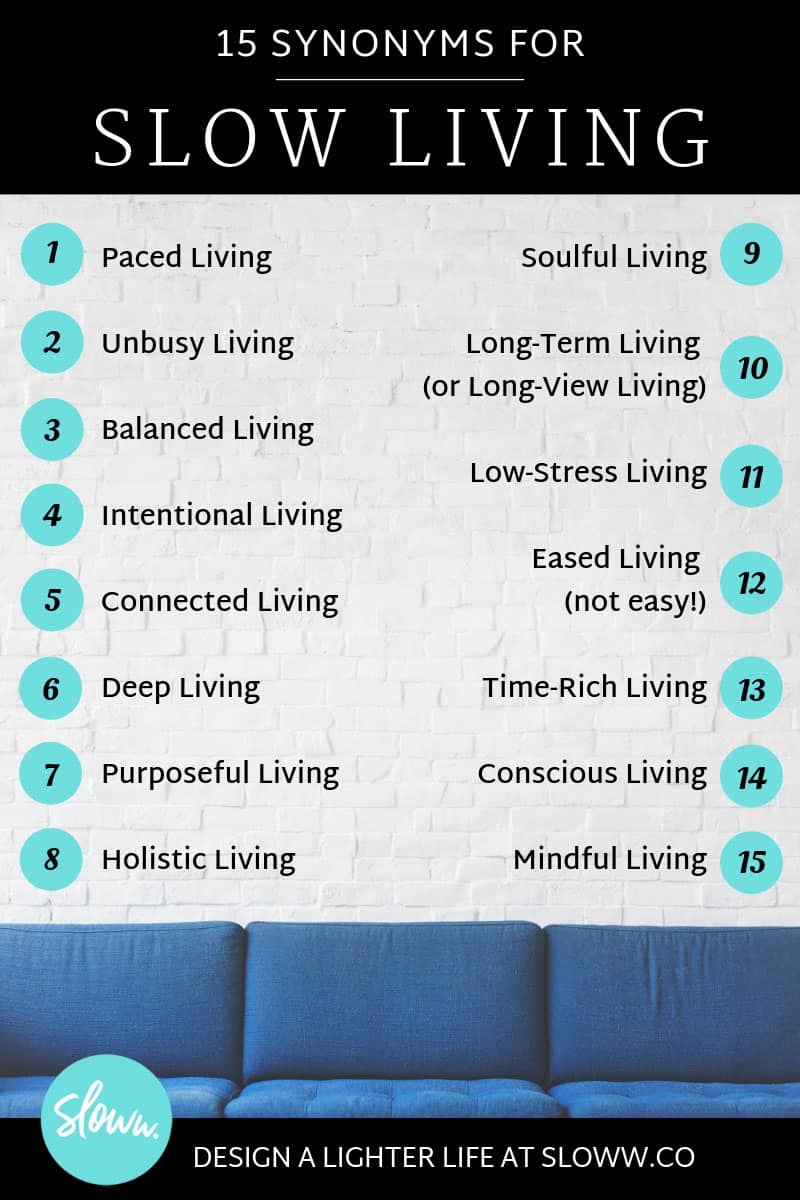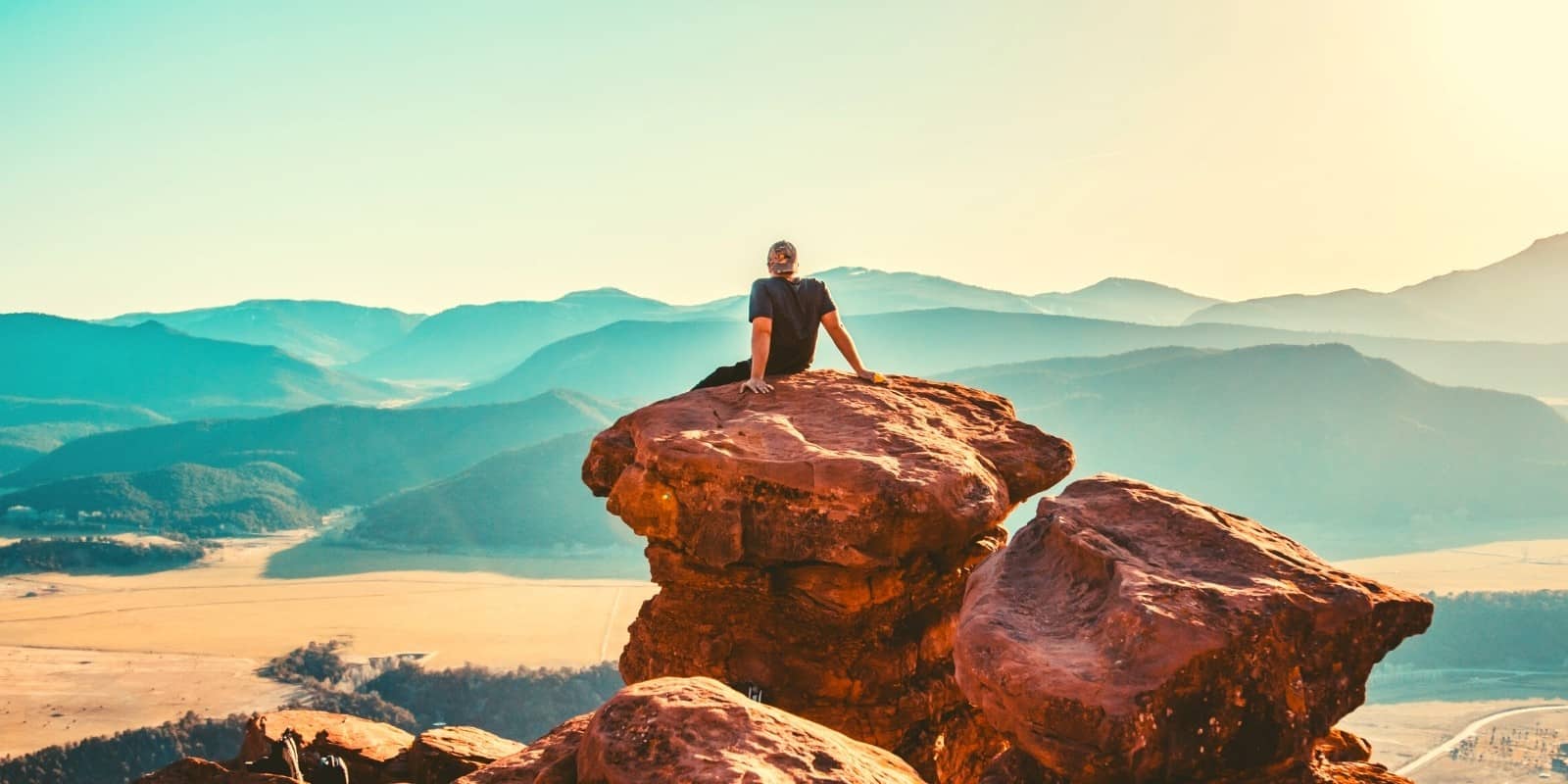Welcome to the second post in this series on slow living.
If you haven’t read the first post, you can check it out below. Or, if you’re already a pro, feel free to skip ahead to the last post to put your slow living knowledge into action:

A Deep Dive into Slow Living & The Slow Movement
The History of Slow Living
There seems to be a worldwide consensus that everything started in 1986 when Carlo Petrini protested against the opening of a McDonald’s in Rome (go Carlo!). My one-year old self would have been right there with you, Carlo.
This moment would mark the beginning. A few years later, the international slow food movement was officially founded.
Some people have reverse-engineered SLOW as an acronym: Sustainable, Local, Organic, and Whole. While some of these principles apply to other aspects of slow living, it’s certainly most applicable to slow food with its emphasis on quality ingredients, sustainability, and local production and consumption. The people in the Blue Zones who live the longest on Earth (like the Ikarians who live simply for 100+ years) would approve.
- “There has always been a parallel track for contesting the notion that faster is better – a countercurrent for slow. Thoreau going to Walden pond, Nietzsche talking about too much speed, Bertrand Russell, the hippies. Then in the eighties the Slow Food movement came along and took back the word ‘slow,’ which has become a four-letter word in our culture, and said fast food was detrimental. They were focused on food, but since then that slow moniker or tag has become a global shorthand for a better, more balanced way of doing everything.” — Carl Honoré
The World Institute of Slowness
In 1999, Geir Berthelsen created a “think tank” called the The World Institute of Slowness¹. He believes “the best thinking often comes from a walk in the ‘slow lane.'”
- “Slowness is the forgotten dimension to time. Unlike chronological time, it is non-linear, time here and now, time that works for you, extraordinary time. So why be fast when you can be slow? Slowness is also about balance, so if you must hurry, then hurry slowly.” — Geir Berthelsen
Enter The Slow Movement
Believe it or not, apparently almost two decades went by before the phrase “slow movement” was coined by Carl Honoré in his 2004 book, In Praise of Slowness: Challenging the Cult of Speed (Summary | How to Apply It (Premium) | Amazon).
- “The slow movement advocates a cultural shift toward slowing down life’s pace.” — Wikipedia Slow Movement²
SlowMovement.com describes it this way:
- “By joining the slow movement we have the opportunity to connect to life. What does connecting to life mean? To connect to life is to connect to every aspect of our lives. Most important of all is to connect to ourselves, and to our own movement within life. That is, to connect to our body and our mind, to connect to spirituality, to our stage in life, to connect to the natural rhythms that guide us, and to connect to death and dying – a natural part of life.” — SlowMovement.com³
The Slow Movement Today
The ever-expanding slow movement goes way beyond slow living and slow food today.
There’s now a slow version of almost anything you can think up: slow money, slow parenting, slow education, slow reading, slow design, slow architecture, slow medicine, slow science, slow gardening, and even slow religion.
And, “slow living” is used interchangeably with a number of other slow living synonyms:

There are a few slow areas that I think are worth digging into a bit deeper in this post: slow cities, slow travel, and slow fashion.
Slow Cities
Slow cities—or cittaslow4 since it was founded in Italy—is the “International Network of Cities where Living is Good.” There are currently 236 cities across 30 countries that have met the criteria to call themselves slow cities.
Slow cities aim to slow down the overall pace of life, design the space for humans (vs traffic), improve the quality of life in urban areas, take care of the environment, promote a healthy lifestyle, and preserve the special nature of local cultures.
Slow Travel
As you may expect by now, slow travel mimics slow cities. You travel at your own pace instead of rushing through your trip. You savor every moment. You know the people that race through countries just so they can claim they’ve been to a certain number? Slow travelers do the opposite—they immerse themselves and stay for awhile.
While traveling, slow travelers connect with the local communities by eating and sightseeing at local places instead of going to touristy or mainstream destinations. Some go as far as living like the locals.
Slow travel often means you try to find “low-impact” ways to travel. Like many things in slow living, slow travel is also a state of mind in how you plan and execute traveling.
Want more on slow travel? Here you go:
- What is Slow Travel? (+ 3 Slow Travel Myths)
- 10 Slow Travel Tips for Your Next Adventure
- Slow Traveling for a Weekend at Lake Tahoe
Slow Fashion
Slow fashion hits close to home. I left a marketing job at one of the largest global clothing companies. While the company isn’t known for fast fashion, it’s certainly not slow fashion. It’s in between—selling a high volume of products at middle-of-the-road price points. I was at the company for four years, and the longer I stayed, the more I struggled with what I was doing. I think the world needs more slow fashion.
“Slow fashion” was coined in 2007 by Kate Fletcher. Slow fashion is about quality over quantity. It’s developing garments that can last a lifetime — or, at least for years to come. You often see smaller brands leading the charge into slow fashion with small batch or limited run product lines.
It’s common for slow fashion to be sustainable and eco-friendly: organic, recycled, or re-purposed fibers, fabrics and materials. This is incredibly important because as I learned firsthand, fashion is a dirty business.
Transparency is also key. More and more slow fashion brands are exposing their manufacturing, supply chain, and pricing models. Price can be higher for slow fashion products, but the transparency allows you to see where your money goes. And, just imagine how many years the garment will last. Buying timeless, slow fashion pieces is a great way to build a long-lasting capsule wardrobe.
You still need to do your homework to make sure you are actually shopping and buying slow fashion. There’s a lot of greenwashing5 these days.
Slow fashion can also encompass buying secondhand or vintage clothing, repurposing old clothing,
- “New ideas and product innovations are constantly redefining slow fashion, so using a static, single definition would ignore the evolving nature of the concept.” — Wikipedia Slow Fashion6
For a deeper look into slow fashion, check out:
More Slow Living Books
Want to really open your mind to slow living?
The books here approach the subject in deeper and different ways. Make sure you also check out the book list in the 101 post.
- The Slow Fix: Solve Problems, Work Smarter, and Live Better in a World Addicted to Speed by Carl Honoré ( Summary | Amazon )
- In Praise of Idleness: And Other Essays by Bertrand Russell ( Summary | Amazon )
Want to learn how to apply slow living to your own life? Read the last post in the series or jump back to the first:
Slow Living Resources
- Slow Living Life Hacks
- Slow Living Challenges
- Slow Living Online Forums & Communities
- Slow Living Quotes
- Slow Living Book Summaries
- Slow Living Videos
Slow LIVING POST CATEGORIES
You can follow Sloww via email using the form field below this post or on social media: Twitter | Facebook | Instagram | Pinterest
Sources:
- http://www.theworldinstituteofslowness.com/
- https://en.wikipedia.org/wiki/Slow_movement_(culture)
- http://www.slowmovement.com/life.php
- http://www.cittaslow.org/
- https://en.wikipedia.org/wiki/Greenwashing
- https://en.wikipedia.org/wiki/Slow_fashion







This is a great resource on the slow movement – thank you!
Sure thing, Erin!